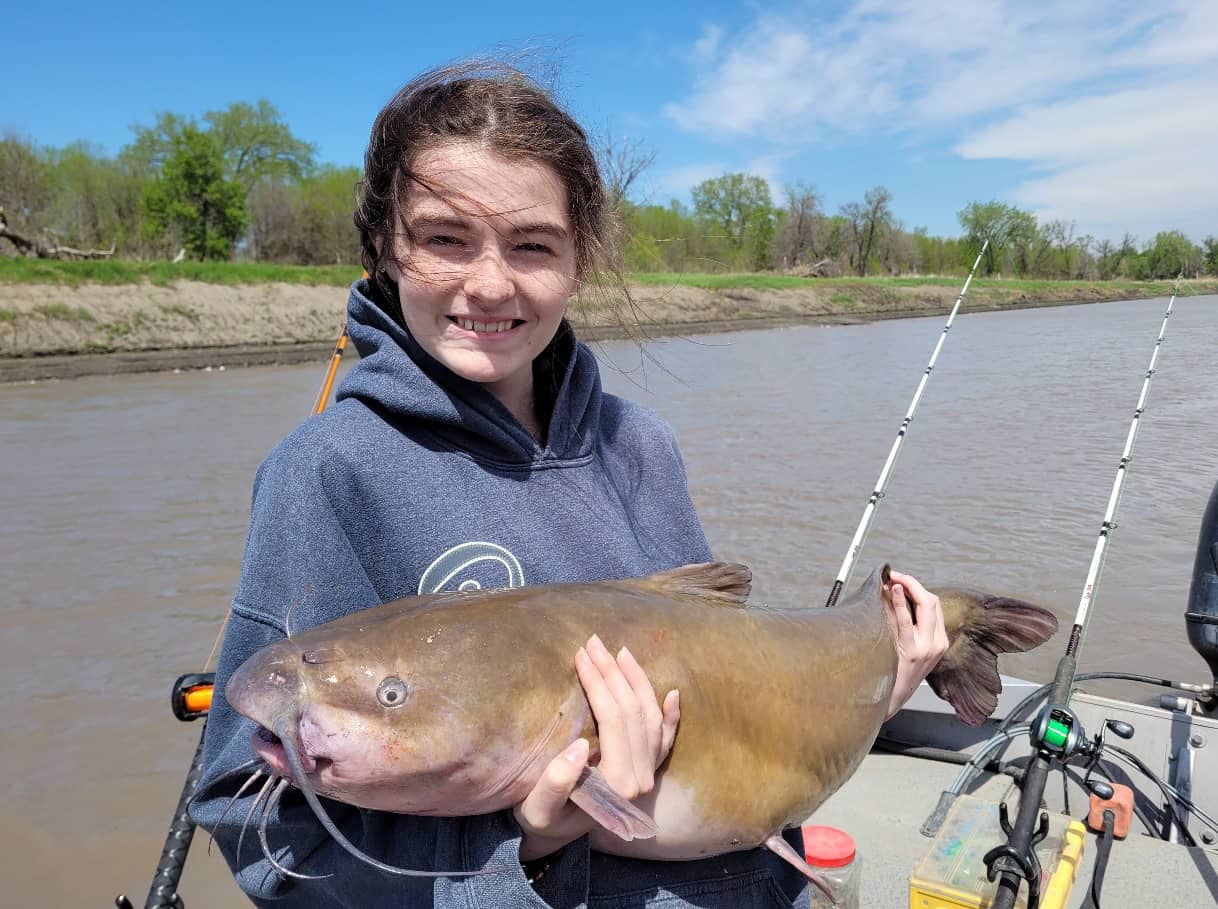
Cat’s Cradle. Channel Catfish up to 37 inches can be found in the northern downstream reaches of the Red River, however a limited supply of bait may provide a major challenge for anglers as the waters warm and the season gets underway. DEO Photo by Brad Durick.
By Nick Simonson
Winterkill woes impacted dozens of sport fisheries across the upper Midwest, but the effects of the harshness of the season also extends to those flows where fish don’t freeze out. While falling water levels and warming temperatures on the Red River along the Minnesota-North Dakota border are setting an ideal scenario for its catfish – which rebounded well in 2022 following 2021’s stressful drought and low water conditions – the only concern held by catfish guide Brad Durick is the availability of bait for anglers to use at the start of the season
“Based on how we went in, and the water conditions of this spring, I think the catfish are going to look really good when we get in there,” Durick predicts, adding. “in the Red River, we’re always shooting for that 20-plus pounder, it’s a very attainable goal here. 25 pounds takes it to a whole other level as far as big fish go, but expect anywhere from 34 to about 37 inches for these channel cats. We had good conditions going into fall, we have great conditions this spring once things warm up and settle down, I would say you are going to have probably your best chance of the year at those 20-plus-pounders, but those 12-to-16 pounders are very common.”
Durick’s season will start around the 20th of May and he anticipates good angling with the dropping water levels. Typically, he guides anglers on the Red River from the end of May into October each year, pursuing catfish with a variety of seasonal baits. This year, finding food for those fish to offer up may be a challenge.
“We’re going to have to get creative and I believe there’s going to be a lot more work going into acquiring bait this year. Most of the sucker ponds and minnow ponds in the upper Midwest – Minnesota and the Dakotas – took a bad winterkill. I’ve talked to the supplier of my local bait shop last week, and he just said it looks pretty bleak,” Durick reports.
As a backup, Durick has ordered in frozen prawns to be used as a bait this spring and will likely source frozen sucker from any distributor able to legally provide it. Additionally, harvesting goldeye from the Red River will help sustain a fishable selection of dead and cut baits that catfish in the flow key in on. With recent changes in transport regulations to prevent the spread of aquatic nuisance species, Durick advises that anglers will have to switch up their bait-storing tactics as they put together their offerings for the season.
“In the case of goldeyes in the river, find a good current seam or a boil where there’s no current and a few feet and that’s where they are,” Durick advises on catching the oily fish which make an ideal cutbait for cats, “what I do with bait like that, I package what I can use in three or four days and put it in a big cooler, as tight as I can in ice, and make sure it stays encased in that ice. It should stay for three or four days in a Ziploc bag with no water on it,” he instructs.
With ramps on the river cleared and the spring’s higher water receding, anglers in and around the Grand Forks area should see good opportunities in the coming days to catch the Red River’s catfish. Durick advises caution those first few trips on the river, suggesting anglers go slowly and utilize their sonar to not only identify obstructions but to find good areas to fish once the water levels drop to more manageable stages.
“Everybody is under flood stage now (as of May 10), I think. There might be some downstream towns that are still teetering on the edge of the flood stage, but Grand Forks and upstream south – Fargo, Wahpeton all those guys – are right to the end of their flood stages. Everybody is shaping up just beautifully right now, I’m anticipating going full tilt by the 20th of May and I’m anticipating really good fishing for the first couple of weeks,” Durick relates.
